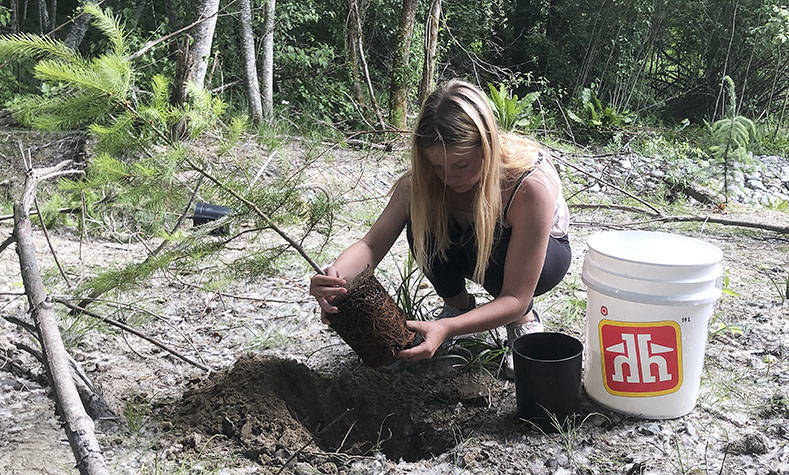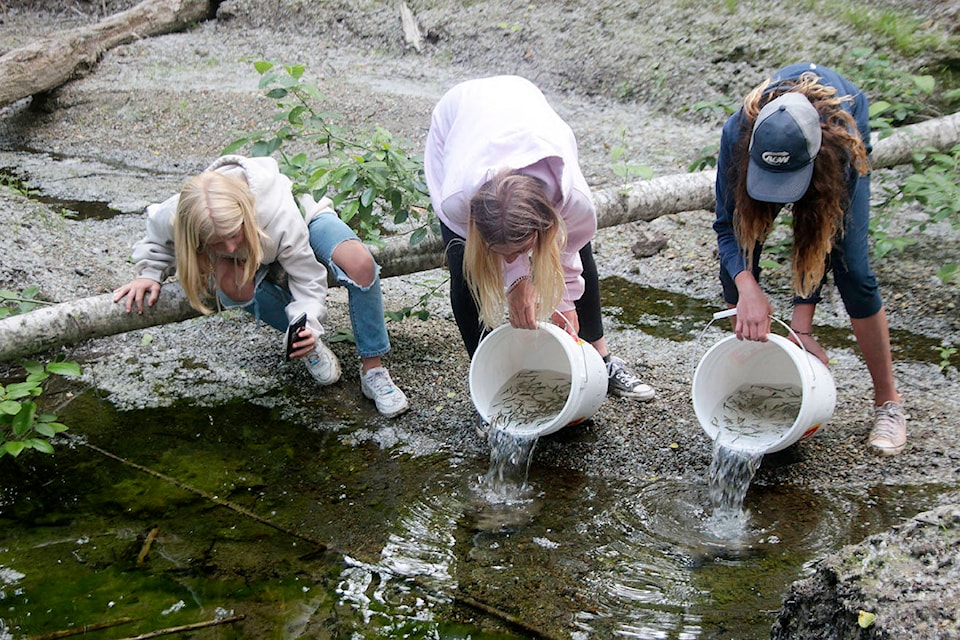The outdoor education class from Lake Cowichan School got some firsthand experience recently on a series of field trips with the Cowichan Lake Salmonid Enhancement Society.
Over a series of three trips, the Grade 6 and 7 students did vital work to restore a side channel on the Cowichan River, travelled to the Cowichan Estuary Nature Centre in Cowichan Bay to learn about marine life and micro-plastics, and helped collect genetic information on Chinook salmon in Shaw Creek.
“The students gained both knowledge and experience through the field trips this spring,” CLSES president Bob Crandall said. “From the upper watershed to the estuary, hands-on learning provides a lasting memory of what is a healthy watershed. Many thanks to all that support our cause: public awareness, public participation and public education.”
On Thursday, June 3, the class travelled to the Oxbow side channel on Riverbottom Road, where they helped continue the restoration of the channel following its reconnection to the Cowichan River.
Historically connected to the river, the side channel became separated over the years as the water level dropped below the culverts under the road. The road and the adjacent riparian area sustained significant damage during flooding in February 2020, and the channel was reconnected when the Ministry of Transportation and Infrastructure did repairs to the site.
Under the guidance of Crandall and Brittany Brooks from the CSLES, and MOTI biologist Sean Wong, the students released 4,000 chum and coho fry into the side channel, where they imprinted on the stream so that they will return and lay eggs when the time comes. The chum headed straight for the ocean after release, while the coho will hang around for a year before moving on to saltwater.
After releasing the fish, the students planted fir and cedar seedlings around the creek. Andrew Coster of the Mesachie Lake Forestry Station provided the trees and helped the students find the best places to plant them.
The following Tuesday, June 8, the students visited the Cowichan Estuary Nature Centre, which Crandall noted was a “monumental task,” with nearly two dozen students visiting under COVID restrictions. The class broke into two groups and took turns studying marine life species and micro-plastics.
On Thursday, June 10, the class took a chartered bus — school buses are not allowed to travel logging roads — for an educational visit to Shaw Creek west of Youbou.
“Shaw Creek is an especially important stream that flows year-round providing freshwater flows to Lake Cowichan and the Cowichan River,” said Crandall. “All other tributaries of Lake Cowichan dry up each summer while Shaw continues to flow.”
The Cowichan spring-run Chinook salmon are a dwindling species, Crandall explained. The CLSES has secured DNA samples with fin clips from juvenile salmon, and sent them to the Department of Fisheries and Oceans Molecular Genetics Lab, which found that this particular species of Chinook is not in any known databases.
“This stream provides learning opportunities for both young and old,” Crandall said.

